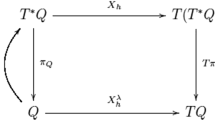Abstract
Malament (Noûs 11:293–300, 1977) proved a certain uniqueness theorem about standard synchrony, also known as Poincaré-Einstein simultaneity, which has generated many commentaries over the years, some of them contradictory. We think that the situation called for some clarification. After reviewing and discussing some of the literature involved, we prove two results which, hopefully, will help clarifying this debate by filling the gap between the uniquess of Malament’s theorem, which allows the observer to use very few tools, and the complete arbitrariness of a time coordinate in full-fledged Relativity theory. In the spirit of Malament’s theorem, and in opposition to most of its commentators, we emphasize explicit definability of simultaneity relations, and give only constructive proofs. We also explore what happens when we reduce to “purely local” data with respect to an observer.






Similar content being viewed by others
Notes
To avoid any problem with gender, we have decided that the observer will be an asexual robot. Such an observer has the additional advantage of being possibly eternal, which is helpful in mathematical arguments.
Since the preprint [7] appeared during the revision process of this paper, we could not include it in the discussion.
Malament calls them ‘causal automorphisms’, but it needs to be emphasized that they do not preserve the causal order relation, but only the symmetric causal connectibility relation.
Here non-trivial means different from the identity and the universal relation.
Ben-Yami uses the notation σ instead of ⪯.
In fact, he uses both Malament’s and Giulini’s criteria, but Malement’s one suffices.
It is maybe ironical that this proof is enlightening precisely because it relies heavily on good old euclidean geometry and Poincaré-Einstein simultaneity…
The converse is true but is not needed in the sequel.
It is an interesting exercise to prove that \(\psi\in\operatorname{Aut}_{X,L_{X}}\) if and only if ψ=ϕ f ∘T∘τ, where ϕ f is as above, T is a “twist”, that is a bijection of \(\mathcal{M}\) to itself which globally preserves all the 3-spheres centered on X, and τ is a translation in the direction of X.
References
Ben-Yami, H.: Causality and temporal order in special relativity. Br. J. Philos. Sci. 57, 459–479 (2006)
Besnard, F.: Time of philosophers, time of physicists, time of mathematicians. Preprint (2010)
Giulini, D.: Uniqueness of simultaneity. Br. J. Philos. Sci. 52, 651–670 (2001)
Janis, A.: Conventionality of Simultaneity. The Stanford Encyclopedia of Philosophy (2010). (Fall 2010 edn.)
Ehrlich, P., Beem, J.: Global Lorentzian Geometry. Dekker, New York (1981)
Malament, D.: Causal theories of time and the conventionality of simultaneity. Noûs 11, 293–300 (1977)
Mamone-Capria, M.: Simultaneity as an invariant equivalence relation. arXiv:1202.6578v1 (2012)
Reichenbach, H.: Axiomatization of the Theory of Relativity. Berkeley University Press, Berkeley (1969)
Robb, A.A.: A Theory of Space and Time. Cambridge University Press, Cambridge (1914)
Rynasiewicz, R.: Definition, convention, and simultaneity: Malament’s result and its alleged refutation by Sarkar and Stachel. Philos. Sci. 68(3), S345–S357 (2001)
Spirtes, P.L.: Conventionalism and the philosophy of Henri Poincaré. PhD thesis, University of Pittsburgh (1981)
Stachel, J., Sarkar, S.: Did Malament prove the nonconventionality of simultaneity in the special theory of relativity? Philos. Sci. 66, 208–220 (1999)
Zeeman, E.C.: Causality implies the Lorentz group. J. Math. Phys. 5(4), 490 (1964)
Author information
Authors and Affiliations
Corresponding author
Rights and permissions
About this article
Cite this article
Besnard, F. Simultaneity in Minkowski Spacetime: From Uniqueness to Arbitrariness. Found Phys 42, 1115–1134 (2012). https://doi.org/10.1007/s10701-012-9649-5
Received:
Accepted:
Published:
Issue Date:
DOI: https://doi.org/10.1007/s10701-012-9649-5




